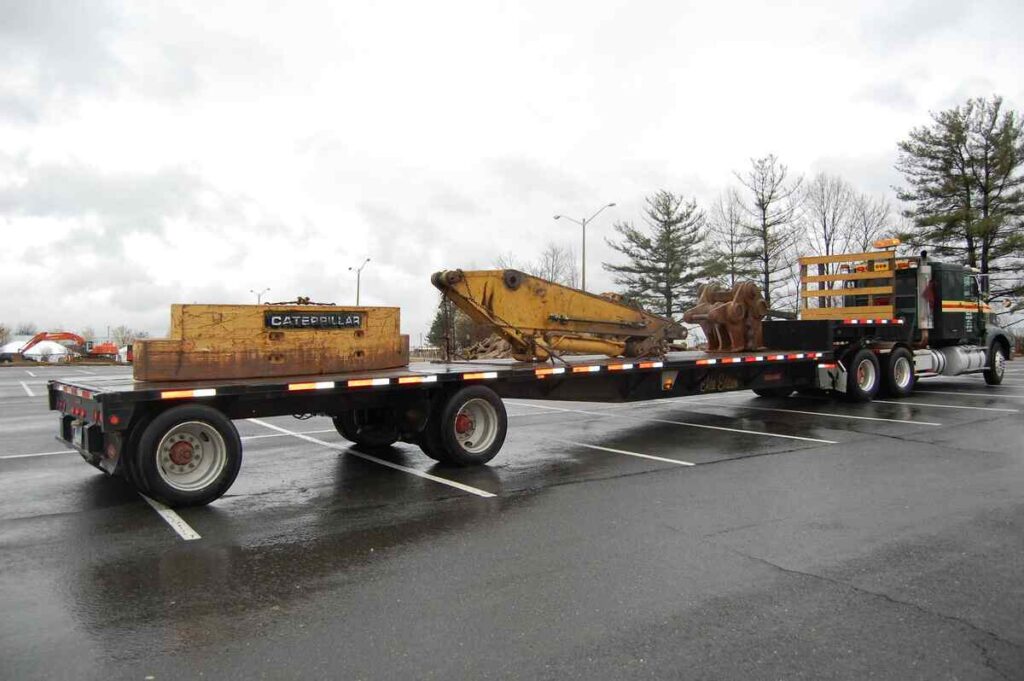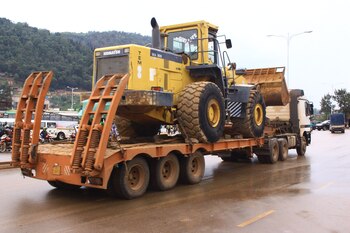
The Essential Guide to Efficient Transport of Heavy Equipment
Transporting heavy equipment is a complex and critical process that requires careful planning, proper equipment, and adherence to safety regulations. Whether you’re moving construction machinery, industrial equipment, or agricultural machinery, understanding the nuances of transporting heavy loads is essential to ensure the safety of the equipment, workers, and the public. In this guide, we’ll delve into the key considerations and best practices for the efficient transport of heavy equipment.
Understanding Heavy Equipment Transport
Heavy equipment transport involves moving oversized and overweight machinery from one location to another. This process requires specialized trailers, trucks, and handling equipment due to the size, weight, and shape of the machinery. Common types of heavy equipment include cranes, excavators, bulldozers, and generators, among others.

Key Considerations for Transporting Heavy Equipment
- Equipment Size and Weight: The dimensions and weight of the equipment determine the type of transport trailer and permits required for transportation. Oversized and overweight equipment may require specialized trailers and routes.
- Route Planning: Plan the transport route in advance, considering factors such as road restrictions, bridge capacities, and low-hanging obstacles. Use GPS and route planning software to identify the most efficient route.
- Permits and Regulations: Obtain the necessary permits for oversized and overweight loads. Familiarize yourself with local, state, and federal regulations regarding heavy equipment transport to avoid fines and delays.
- Safety Precautions: Secure the equipment properly to the trailer using chains, straps, and binders. Use warning signs, flags, and lights to alert other drivers of the oversized load. Ensure that drivers are trained in safe loading and unloading procedures.
- Insurance Coverage: Ensure that your insurance policy covers the transportation of heavy equipment. Consider additional coverage for high-value equipment or long-distance transport.
- Weather Conditions: Monitor weather conditions along the transport route and plan accordingly. Extreme weather, such as heavy rain, snow, or high winds, can affect the safety of the transport operation.
Best Practices for Transporting Heavy Equipment
- Choose the Right Trailer: Select a trailer that is suitable for the size and weight of the equipment. Options include flatbed trailers, lowboy trailers, and specialized trailers for oversized loads.
- Inspect the Equipment: Conduct a thorough inspection of the equipment before transport to ensure that it is in good working condition. Address any maintenance issues or safety concerns before loading.
- Secure the Equipment: Use appropriate securing methods, such as chains, binders, and straps, to secure the equipment to the trailer. Double-check the security of the equipment before transport.
- Follow Safety Regulations: Adhere to safety regulations regarding the transport of heavy equipment, including weight limits, speed limits, and signage requirements. Ensure that drivers are trained and qualified to operate the equipment.
- Communicate Effectively: Maintain communication between the transport team, equipment operators, and any escort vehicles. Use radios or mobile phones to stay in contact and address any issues that arise during transport.
- Monitor the Transport: Continuously monitor the transport operation to ensure that the equipment remains secure and that there are no safety hazards. Make adjustments as necessary to address any issues that arise.
Conclusion
Transporting heavy equipment requires careful planning, adherence to regulations, and a focus on safety. By following best practices and considering key factors such as equipment size, route planning, and safety precautions, you can ensure the efficient and safe transport of heavy equipment. By prioritizing safety and efficiency, you can minimize the risks associated with transporting heavy loads and ensure that the equipment arrives at its destination safely and on time.
